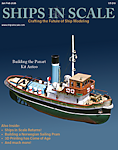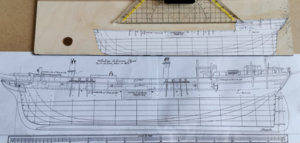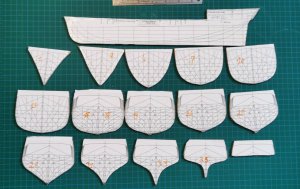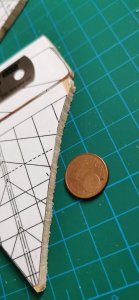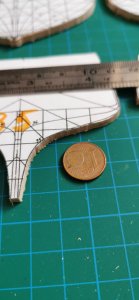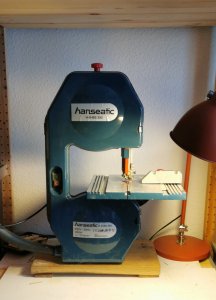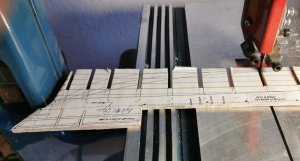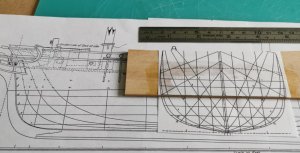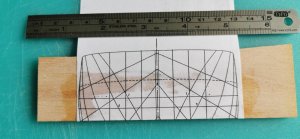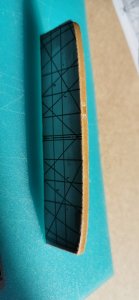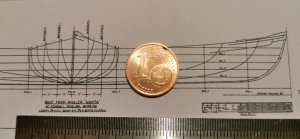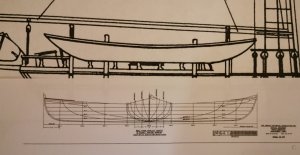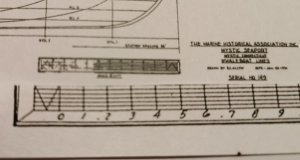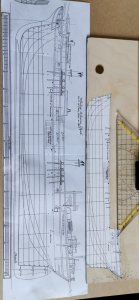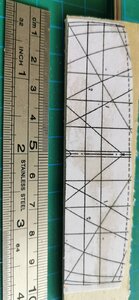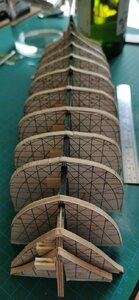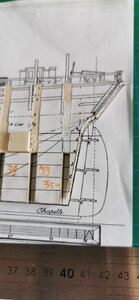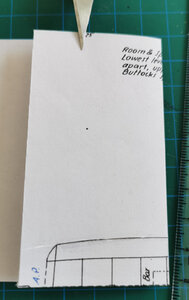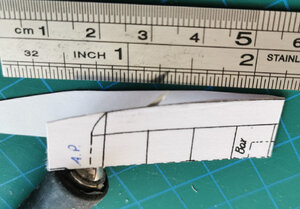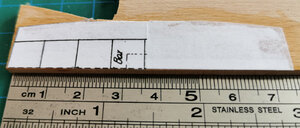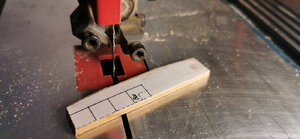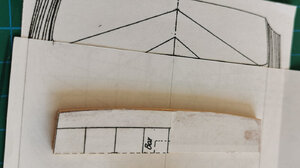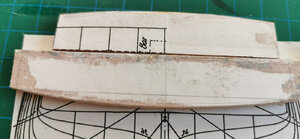Hello friends,
to get a progress with my craft working skills (NOT kills!!!) I decided to restart my whaling ship's project I started in early 2019.

Some told me not to do the third step before the first so I redraw to a smaller simpler project of less complexity. It is an us-American whaler of Provincetown from the year 1855 (Sorry for this correct is the year 1853!). Not ot too much is known about her I did got some information from the Provincetown libary about several of her journeys. Till now I was unable to research the owner's company flag or colours.
A Whaler of this time is a first fish industrial gfactory on sea. At this time nearly the half of the sighted whales escaped an d a quater to one third of their hunters were killed. So it was pretty fair battle.
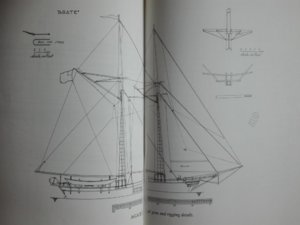
Our sources are very simple as these are two:
Howard Irving Chapelle
American Fishing Schooners p.80. She appears in this book as she is relatived to the Grand Banks Schooners.

Chapelle gives a fine set of drawings to us - telling us she was built for whaling especially. Traditionally she was the last vessel of large size (Lpp 74"-10' 1/2) built at Essex/Mass. built from local white oak and pine.
The second source is also a book... the wellknown
V.R.Grimwood tells us in American shipmodels and how to build them
some quite simpler drawing - but added some details

and stem decor to us

plus details of the galion. There are added

deck features and some basic details.
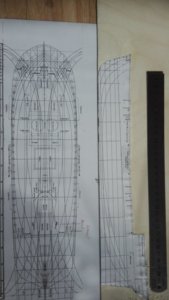
I managed to glue the centerboard's plan onto a 4mms plywood - and I managed to explore it again in the workshop.

here the bulkheads...
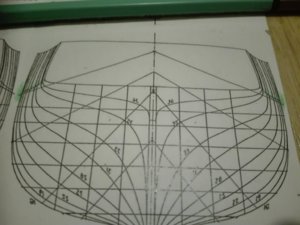
Here the frames plan from after...

from the front bulkheads.
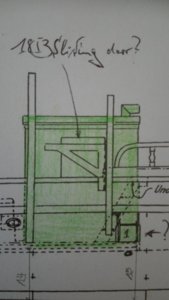
Here the galley an the plan by Howard I. Chapelle.

Here my drawing of the galley's sliding door ... taken from photographs collected by Church's famous book.

Here my drawing of the galley.
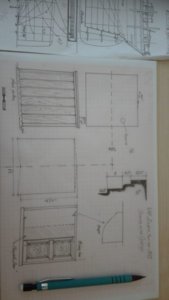
a closer look to the details of the galley.
my idea of the galleys wall.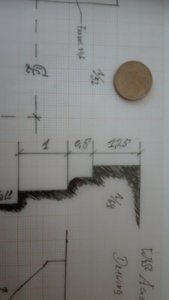
And the top galley's framing scaled in millimeters for 1/64.
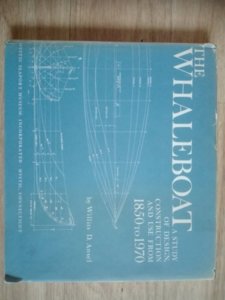
So for the detailled build of the whaling boats I do have bought this interesting book - as I am always better in theory than craftmansship...

Here my trial in 1/48 and 1/64...

in 1/64 does meet the shelf board with rigging...
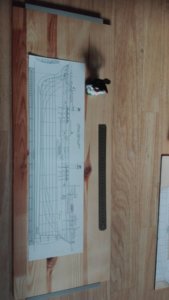
...in 1/48 it is a more tight fit.

This is the situation (the Greenwood and the Chapelle's drawings clamped together) at the shelf itself; by the way
the "redly" tanned sails are wrong and only for European ships - the American cotton was cheap and so sails were white on the ships.
(Now I have to get the drawings from my archiv - but that has moved its position in the shipyard and the documents were spread over several strage boxes... )
)
Hope you like this little fit for better results - project.
to get a progress with my craft working skills (NOT kills!!!) I decided to restart my whaling ship's project I started in early 2019.

Some told me not to do the third step before the first so I redraw to a smaller simpler project of less complexity. It is an us-American whaler of Provincetown from the year 1855 (Sorry for this correct is the year 1853!). Not ot too much is known about her I did got some information from the Provincetown libary about several of her journeys. Till now I was unable to research the owner's company flag or colours.
A Whaler of this time is a first fish industrial gfactory on sea. At this time nearly the half of the sighted whales escaped an d a quater to one third of their hunters were killed. So it was pretty fair battle.

Our sources are very simple as these are two:
Howard Irving Chapelle
American Fishing Schooners p.80. She appears in this book as she is relatived to the Grand Banks Schooners.

Chapelle gives a fine set of drawings to us - telling us she was built for whaling especially. Traditionally she was the last vessel of large size (Lpp 74"-10' 1/2) built at Essex/Mass. built from local white oak and pine.
The second source is also a book... the wellknown
V.R.Grimwood tells us in American shipmodels and how to build them
some quite simpler drawing - but added some details

and stem decor to us

plus details of the galion. There are added

deck features and some basic details.

I managed to glue the centerboard's plan onto a 4mms plywood - and I managed to explore it again in the workshop.

here the bulkheads...

Here the frames plan from after...

from the front bulkheads.

Here the galley an the plan by Howard I. Chapelle.

Here my drawing of the galley's sliding door ... taken from photographs collected by Church's famous book.

Here my drawing of the galley.

a closer look to the details of the galley.

my idea of the galleys wall.

And the top galley's framing scaled in millimeters for 1/64.

So for the detailled build of the whaling boats I do have bought this interesting book - as I am always better in theory than craftmansship...

Here my trial in 1/48 and 1/64...

in 1/64 does meet the shelf board with rigging...

...in 1/48 it is a more tight fit.

This is the situation (the Greenwood and the Chapelle's drawings clamped together) at the shelf itself; by the way
the "redly" tanned sails are wrong and only for European ships - the American cotton was cheap and so sails were white on the ships.
(Now I have to get the drawings from my archiv - but that has moved its position in the shipyard and the documents were spread over several strage boxes...
Hope you like this little fit for better results - project.
Last edited:


